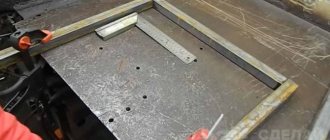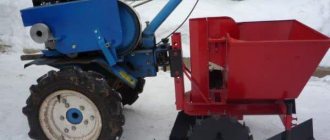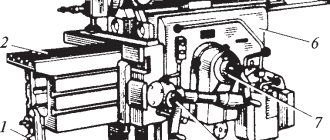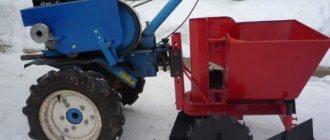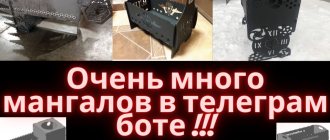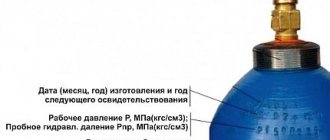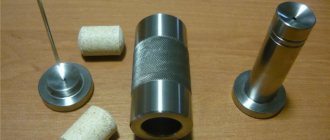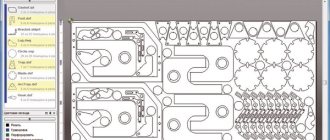Traditionally, in most private houses and dachas, a place for barbecue is provided in the recreation area. Some people install a solid structure to start cooking kebabs from a wood fire, others are content with compact models, filling them with ready-made coal or briquettes.
Outwardly, the grill looks simple, but in fact, its design takes into account several laws of physics. In order for them to work, and for the meat to acquire the desired juicy taste and aroma, the size of the barbecue grill must be optimal.
Standard models
The standard models sold by the retail chain are similar in design and have approximately the same dimensions.
Standard sizes of barbecue grills made of iron
| Model/Parameters, cm | Width x Depth x Length | Overall height |
| Mini | 25x15x35 | 35 |
| Standard | 25x15x40 | 40 |
| Standard 2 | 30 x 20 x 50 | 50 |
| Status standard | 29.5 x 20 x 45 | 40 |
| Classic | 36 x 15 x 60 | 70 |
Small-sized collapsible kebab makers, with removable legs, made of thin metal 0.5 - 2 mm. Among the listed models, the classic grill 36x15x60 cm has the most spacious roasting pan. Wall thickness - 2 mm. You can place 8 - 9 skewers with 8-10 pieces on each.
Standard models are designed to be universal, and this is their main advantage. They can be used in the country, on the river bank, or taken on a trip.
The undeniable advantages of barbecue makers are:
- laconic design;
- convenient transportation;
- easy and quick assembly;
- attractive price.
However, not all of the listed advantages are important for the owner. For example, if the owner uses the device only on the site, the service life and appearance of the product are more important to him than the weight and ability to disassemble it.
Minuses:
- thin metal;
- insufficient size of the fryer;
- short legs;
- inconvenience of operation;
- fragility of the structure.
Therefore, the device must be selected individually, based on the principles of its use.
Barbecue diagram with dimensions
At the same time, there are time-tested and proven barbecue designs with the correct dimensions, which should be guided by and adjusted to the ideal.
The right grill will be easy to use and will last a long time.
Mobile or static
Mobile models are great for periodic trips to the countryside and nature, for fishing and hiking. Such products are characterized by light weight and compact dimensions, the ability to assemble and disassemble. Such designs can be easily carried and even placed in hand luggage, a bag or a backpack. Products are made mainly from metal, namely stainless steel.
Among the disadvantages of mobile barbecues are the thin walls of the device and the gaps between some elements. This leads to large heat losses during the frying process. Stationary products are more powerful and impressive, reliable and dimensional. Such a device can be placed in a gazebo, in a garden or on a plot.
A stationary grill is made of cast iron, brick or stone. Some models require a foundation to be installed. You can no longer take such a design with you on a hike or in nature. However, it is loved by those summer residents who spend most of their time outside the city, who value a complete and comfortable vacation, and who want to create a real and aesthetic summer corner on a country plot.
What do the sizes depend on?
When determining the optimal size of the barbecue, as well as its design features, it is necessary to take into account:
- Number of people. The length of the kebab maker depends on this indicator, allowing you to simultaneously cook kebab for the whole company.
- Cooking method: skewers, barbecue grill. The width and length of the device depends on it.
- Distance from coals to skewers. The depth of the fryer, as well as thermal radiation, depends on this indicator.
Why is it at all?
We all understand that the heat in the grill comes from burning coal. And combustion requires oxygen.
How does oxygen come in?
In the simplest roasting pan - from above. If you made holes on the side. That and through them.
In these options, the coal is near the walls. Especially near walls with holes, it will burn hotter. The meat above this coal will overheat, and in the middle of the grill, on the contrary, it will not receive enough heat.
When frying shish kebab and focusing on undercooked pieces, you will burn the meat at the walls. You can chalk this up to the romance of barbecue, but why, when it is possible to get barbecue cooked just right?
The grate or second bottom is what supplies air to the coal throughout the roaster. Even burning means even cooking. This is exactly what they wanted.
Advantages and disadvantages
- Better fire protection
- Quick ignition, some say 3 times,
- More even heat
- Due to the better combustion conditions of coal, there is a small saving on fuel if you do everything right.
Well-chosen sizes for metal structures
In order for the metal barbecue to turn out correctly, it is necessary to take into account everything from the height of the owner to the number of pieces placed on the skewer.
Width
The width of the grill is determined by the length of the skewers. The full length of a standard skewer is 45 cm, the working area is 30 - 35 cm. Taking into account a small margin, the maximum width of the frying pan is 35 cm. Increasing the size leads to improper heat distribution, heat loss, and uneven cooking of food.
How tall should the grill be?
The height of the barbecue grill is one of the important characteristics. To use the kebab maker comfortably, it should not be too low or high. The full height of the barbecue is determined taking into account the height of the owner and is 0.8 - 1 m. To clarify these dimensions, you need to measure the distance from the ground to the elbow.
Length
The correct length of the barbecue is calculated by the formula: L = N * l , where N is the number of skewers, l is the distance between their axes, equal to 7 - 10 cm.
For example, 6 servings of shashlik being cooked at the same time will take up the length: 6 * (7 - 10) = 42 - 60 cm. If you move the skewers a little closer to the ends, a small device 40 cm long is enough. If you prefer to place the skewers loosely or add 2-3 more – choose a length of 60 cm.
Standard rectangular barbecue grates 30 x 28 cm will also fit into the correct dimensions of an iron barbecue: for 2 grates, a barbecue length of 60 cm or more is suitable. In this case, you can combine one grate and skewers.
Length 60 cm is the most versatile size, allowing you to cook quite a lot of food without wasting coal.
For larger companies, choose a barbecue length of 80 cm.
Devices of longer length are rarely used at home. They find their application in public catering establishments and catering.
Depth
The depth of the grill is determined based on the distance from the product to the coals and the thickness of the fuel layer.
The correct distance from the coals to the meat in the grill is from 12 to 15 cm. The distance has been verified by many years of experience among amateurs, confirmed by professionals, and is also explained by the laws of physics.
Every centimeter is important here - after all, the actual heat is inversely proportional to the square of the distance to the coals. In practice, this means that if you reduce the distance from the skewer to the coals by 2 times from 12 to 6 cm, then the thermal effect will increase 4 times.
If the distance is shorter, the outside of the kebab will fry much more intensely and burn faster. At the same time, it may not be fried inside, especially if the pieces are tight and large enough. Skewers need to be turned frequently. In addition, the fire that appears when coals are ignited from dripping fatty juice can burn the dish, leaving only coals.
Increasing the distance has the following disadvantages:
- Cooking slows down.
- The crust forms more slowly or does not form at all. The juice evaporates from the meat, making it dry.
- Higher coal consumption.
Taking into account the thickness of the coal layer of 5 - 10 cm, the optimal height of the walls of the barbecue is chosen from 15 to 25 cm.
Correct sizes
Thickness
The thickness of the material from which the fryer is made directly affects the service life of the device. Standard products made of sheet steel up to 2 mm thick last up to 3 years. They deform when heated, after which they burn out or rust through.
A good product that will last a long time is made with a thickness of at least 3 mm:
- walls - 3 - 6 mm,
- bottom - 3 - 8 mm.
A body made of a thin metal sheet of 2 - 3 mm would not hurt to reinforce it with reinforcement along the long side.
Distance between skewers
The distance between the skewers on the grill is chosen to be at least 8 - 10 cm, so that during cooking you can easily turn them over without touching each other. Laying too tightly slows down cooking and blocks air access to the coals.
The main stages of making any barbecue and expert advice
We will need a tool:
- Welding machine;
- Bulgarian;
- Scriber;
- Wire bristle brush;
- Drill with drills ø 3-4 mm, and 12-15 mm;
- Metal ruler and square;
- Hammer.
The sequence is as follows:
- We weld the side walls. First, we grab at several points, aligning the corners with a square and a plane;
- We grab the bottom to the walls. Each wall at several points;
- We completely weld all seams;
- We weld the rectangular blanks to the ends of the corners - the future legs;
- We grab the corners of the legs to the body of the fryer. We make sure that the distance from the bottom of the roasting pan to the floor is the same;
- We weld the seams on the edges of the corners on both sides;
- We clean the seams from scale.
This completes the welding work.
Let's move on to metalwork:
- We mark the places for drilling holes on the walls of the fryer using a metal ruler, a square and a scriber;
- We drill holes. First, a thin hole – ø 3-4 mm. Next, drill out with a thick drill ø 12-15 mm.
- Knowing how to make slits on the grill for skewers, we apply markings on the edges of the side walls;
- We make cuts using a grinder according to the markings.
- Clean the holes and edges of the sidewalls from burrs.
At this point you can consider the work done. You can paint the outside of the grill with special heat-resistant paint. All work, including procurement, is completed in a few hours.
Indicators for brick structures
The correct dimensions for brick structures are observed based on proportions: the height of the chimney arch should be at least 1-1.2 times the height of the brazier portal, and the chimney roof should be at least 1-1.2 times the height of the roof. The cross-section of the chimney depends on the area of the firebox portal. The optimal ratio is 1:8 - 1:10.
The external overall dimensions of the barbecue grill are slightly larger than the metal counterpart, which is due to the material used. The dimensions of the fryer are similar to a metal kebab maker.
Dimensions of a simple brick kebab maker in a metal frame
The refractory brick used is SHA-8, dimensions 250x124x65 mm, corner 45x45x5 mm.
| Dimensions, mm | External | Domestic |
| Length | 634 | 494 |
| Width | 384 | 244 |
| Height / Depth | 200 | 124 |
External overall dimensions are given taking into account the size of the frame.
How deep the brazier should be depends on the chosen design, size and number of layers of brick. In this case, the depth of the grill corresponds to the height of the brick - 124 mm.
Dimensions of a brazier in a brick grill
A brazier in a brick complex differs in size from a simple one made on “dry” masonry. Dimensions depend on the size of the selected brick, the order, and the thickness of the mortar layer.
With a brick height of 6 cm and a joint thickness of 1 cm, the depth of the brazier will be 21 or 28 cm when laid in three and four rows, respectively. The distance from the food to the coals is also adjusted using grates placed at different heights of the fryer.
| Dimensions, mm | External | Domestic |
| Length | 1000-1400 | 600-1000 |
| Width | 600 | 400 |
| Height / Depth | 1000 | 210/280 |
General arrangement and principle of operation of the barbecue
A brazier is an open brazier in which a fire is lit for cooking meat, fish, and vegetables. The design of the fryer must withstand prolonged heating and maintain its shape.
A proper barbecue grill is a trough made of metal or other heat-resistant material. In this container, firewood or charcoal is lit, which provides even heat.
Metal pins called skewers are placed on the walls of the grill. Products (meat, sausages, fish, vegetables) intended for heat treatment are threaded onto skewers.
Focus on mandatory factors
Design parameters for barbecue depend on several factors:
- Method of roasting meat. The distance between the walls depends on this. Products can be cooked on skewers or used for this purpose on barbecue grills. Skewers are made according to standard parameters, so the grill will have to be made accordingly. But with a grill it is much easier, because there are many different sizes that are selected depending on the grill. Thus, first a grill is built, and then a grate is selected based on its parameters.
- The need for transportation. This is the answer to the question of what the material from which the structure is made should be. It all depends on where exactly you plan to enjoy the kebabs. If the grill is installed in your summer cottage, you can make it from cast iron or thick metal. Such a structure will be permanently located on the site, and will only be removed indoors for the winter, when it is no longer needed. If you don’t have a summer cottage, but from time to time you go out into nature and cook barbecue, it’s better to make the grill portable. It is advisable to make it from lightweight material, making sure that it is foldable and compact.
- Material for cooking meat. The optimal depth of the structure depends on this. There are two options: coals and firewood. In the first case, the grill is made shallow, because the coals fit compactly under your meat. But in the second case, the depth will be significant, since a lot of firewood will be needed to get the required amount of coals for cooking barbecue.
Blueprints
And finally, a few drawings.
Change the sizes at your discretion, there is no crime in this. Drawing of an iron barbecue with high legs
Drawing of a barbecue-suitcase made of metal
Drawing of a collapsible barbecue
Peculiarities
Metal is the most common material for the production of grills and barbecues. Such structures are light in weight, they are easy to carry and disassemble. The metal heats up quickly and retains heat well, which promotes uniform and fast frying of fish, poultry and meat.
Selecting metal is a very serious task, since during use, under the influence of high temperatures, the grill becomes deformed - the boxes begin to resemble helicopter blades, which are twisted in the direction of the main axis. Experts call this phenomenon plastic deformation. All structural elements are interconnected, so internal tension arises, which causes a significant change in the shape of the barbecue. In the future, this leads to complete loss of shape and destruction of the product.
That is why barbecues made of stainless steel are not of high quality. This material is very resistant to burning, so the grill lasts no more than 1-2 seasons. Heat-resistant steel allows you to create models that are stronger and more durable. The alloy contains a high percentage of chromium; this metal oxidizes at elevated temperatures and forms a refractory coating. In addition, the production of this material itself is based on the addition of active components that prevent deformation and fracture of steel under adverse conditions.
Experts recommend using steel grades 10G2, 09G2S and 16GS for the production of barbecues and barbecues. They can withstand several thousand combustion/cooling cycles. But alloys ST10, ST20 or ST3 are more often used for tourist models, which are characterized by low weight and short service life.
In addition to temperature resistance, heat-resistant steel is corrosion-resistant and wear-resistant. It is not susceptible to impacts and mechanical damage of weak and medium strength, therefore it is optimal for the production of fryers that are used outdoors in conditions of high humidity.
The advantages of metal barbecues include:
However, such installations are not easy, so they are used as stationary models. And the cost of such work is quite high.
Broodstock
The broodstock must be kept separate from the young stock that is raised as a commodity. Of course, the best individuals that grew the fastest are selected as producers. Female African catfish are capable of spawning every month. African catfish become sexually mature at the age of 2 years, and then females and males can be used for breeding.
Feed for the parent flock should be designed so that the proportion of protein in the diet should be at least 38%. The daily broodstock feed intake should be 1.5% of weight. It is necessary to place individuals on a starvation diet for 2-3 days before spawning.
In order for African catfish to reproduce more actively in captivity, they need hormonal stimulation. The following are used as stimulants:
- ovaprim;
- deoxycorticosterone acetate (DOCA);
- human chorionic gonadotropin (HCG);
- the pituitary gland of catfish from broodstock, common carp, Nile tilapia and even frogs.
There are more than 20,000 fingerlings per kg of female weight.
Spawning can begin only at water temperatures above +18-20°C. It is desirable that the spawning area be overgrown with grass, and it is desirable that the water be weakly flowing or standing. Before spawning begins, it is advisable to isolate males and females from each other.
Double bottom
The grill with a double bottom is slightly different from regular models in size. To do this, consider a popular model with this addition. The thickness of the body is 0.4 cm, and the possible number of skewers is 20 (!) pieces, which is possible due to its dimensions. The length in this case is 1.95 m, the width is 0.98 m, and the height is 2.2 m.
The height is due to the fact that this model has a roof that will prevent precipitation from getting inside the fryer.
Advantages over a traditional roaster
For those who doubt whether it is worth changing the usual horizontal barbecue for a fundamentally new design, we recommend that you familiarize yourself with the advantages of a vertical brazier:
- Environmental friendliness. The meat is placed away from the fire and coals, so smoke does not reach it. The concentration of carcinogenic substances in the finished product is reduced thousands of times compared to barbecue prepared in the traditional way. The efficiency is not reduced, even if you do not fill the entire height of the internal well with coal - the heat from the smoke and the heated casing thoroughly cooks the meat.
- Capacity. Possibility of preparing large quantities of food at the same time. The skewers are placed not on one side of the grill, as in the usual version, but on two or even four. The large product can hold up to 7 kg of food.
- Versatility. At the same time, you can fry meat, fish and vegetables, placing them on different sides of the grill.
- Design thoughtfulness. The notches on the plates that hold the skewers allow you to move the meat closer and further from the fire. Thus, the dish is fried evenly and has a rich taste.
- Safety . Since the coals are separated from the meat by protective grilles, the risk of igniting nearby items is reduced to zero.
Among other things, the fryer is simply convenient to use. The ash is collected in a special container, and the fat from the meat flows into a tray, so cleaning the vertical barbecue will not take much time.
If you choose the right materials and follow the manufacturing technology, the product will be reliable and will last a long time even with regular use.
How to calculate?
Thanks to the many years of experience of craftsmen, craftsmen, and engineers, we were able to compile a selection of the best tips for calculating the technical features when making a barbecue with your own hands.
Length
If you are one of those who wants to make a lot of tasty and good meat in one go, then it may seem logical that you need to make the working surface of the grill as large as possible.
But keep in mind that the movement of the long structure in this case will be limited - the grill will be bulky and heavy. If, on the contrary, you want a small portable model, you should be guided by the fact that when filling with coal, you should end up with the optimal temperature for frying.
Experienced masters advise taking 100 cm as a basis, and then everything is to your liking.
Individual sizes are calculated using a special formula: Xw*S=length. In this case, Xsh represents the required number of skewers for simultaneous cooking, and S is the distance between them.
Width
Categorical statements that a width of 0.4 meters is ideal are incorrect in advance. If you're lucky, the length of the skewers or grill will be 0.43 m, but what if it's less?
To do this, when creating a drawing of the barbecue, you need to measure the average length of the skewer so that there are no further problems. The popular width at the moment is 0.3 meters, as this is quite sufficient and helps to save coal.
But keep in mind that standard skewers are flat, which means you must take care of vertical grooves so that it is easy to turn the skewer when cooking.
Rounded slits are uncomfortable.
Depth
The calculation of the depth is up to you, but we recommend sticking to the ideal option - 18 cm.
Cast iron
Cast iron is the traditional option. It heats up in a short time and retains heat for a long time. Cast walls act like an oven, improving quality and reducing roasting time. A cast iron grill looks aesthetically pleasing and attractive, and lasts for a hundred years.
This material is not exposed to heat and high temperatures, moisture and other negative external factors. It does not scratch or crack, does not rust or deform.
A cast iron grill is perfect as a static model. It will decorate any recreation area and fit into the design of every suburban area. This is a strong and durable, reliable, massive and very heavy device. Therefore, using cast iron as a portable model is not recommended.
Instructions for self-production
Let's consider the process of assembling a barbecue made of metal. To make a simple model you need a minimum of materials and tools.
Tools and materials
As a rule, heat-resistant black paint is used for painting so that the burnt edges do not stand out and create a contrast with the main coating.
Step-by-step instruction
We will show you how to assemble a simple grill yourself. Its design is so simple that any novice craftsman can make it.
For this purpose, a sheet of metal 2 mm thick was purchased from a metal warehouse. We recommend using metal with a thickness of at least 3 mm for the barbecue.
Since this grill (in our example) will not be used very often, 2 mm thick metal will be enough for us. Before starting work, for convenience, we made a small cutting diagram.
To obtain an even cut, you can use a regular iron strip as a guide bar.
When working, remember to use appropriate protective equipment.
Due to their design, homemade clamps are very helpful in work.
Once all the panels are cut, it's time to start drilling the holes. We decided to order a set of step drills for testing.
The optimal height of the grill sides is 150 mm. A row of holes is located at a height of 50 mm from the base. Hole pitch 60 mm. Diameter 12.4 mm.
The first impression of these drills is so far positive. The chips, as expected, come out of the hole in whole ribbons. I use a countersink to remove burrs.
We also place the recess for the skewers in increments of 60 mm.
gazebo for a summer house with barbecue area inexpensively
It is best to process the sidewalls with a bag, pre-compressed with clamps.
When all the parts are ready, you can proceed to welding.
It is very convenient to use magnetic corners to secure parts.
We assemble the box using tacks.
Now you can scald.
It is not necessary to completely weld all the seams. We just wanted to practice welding one more time. We knock down the slag and clean the welds.
From 10 squares we make handles for easy carrying.
We will make the legs of the barbecue from 15 profile pipes, their length will be 80 cm. We trim the blanks using a cordless circular saw.
It will not be easy to get such an even cut with a regular grinder.
The legs will be attached using M6 bolts.
If necessary, this will allow you to store and transport the grill when folded.
To attach the legs, it is most convenient to use a wing nut.
When preparing barbecue, an additional work surface is never superfluous. A small shelf was quickly welded from 10 squares of reinforcement. It is installed in one movement in two sections of 15 professional pipes.
When all the work is completed, we clean all the parts and cover them with heat-resistant enamel. We wait for the paint to dry completely and you can assemble the grill.
The grill turned out to be very durable and quite stable. Its dimensions are as follows: height 80 cm, length 50 cm, width 30 cm, depth 15 cm.
When first ignited, the paint is fired within 15 minutes and it gains full mechanical strength.
The grill turned out to be very successful. Its design is so simple that even a novice welder can make such a grill.
Sometimes an awning or canopy is installed over the barbecue to protect the brazier from rain. The grill can also be painted with heat-resistant paint to protect against corrosion.
The best distance between skewers on the grill for preparing delicious dishes
Meat is cooked well only if the structure is assembled correctly. To find out how to properly weld a grill, dimensions and drawings, you need to go through all the stages of self-production:
- a sketch is drawn on paper. The parts are cut out and used as a layout;
- Dot markings are applied to the steel sheets according to the layouts. First you need to cut out the bottom and sides - two square, two rectangular;
- all parts are fastened using welding equipment;
- Legs of the same size are cut out of bent metal and welded to the main workpiece;
- the structure is assembled and tested for strength.
You should print the layouts in full size - this will prevent mistakes when cutting out metal
After assembling the structure, corners for laying skewers are cut out
To make it convenient to use the grill, it should be placed on a board or other flat surface.
Useful additions
DIY brick barbecue construction
If you really get down to business, you should take care of the compartment for preparing coals. It can also be used as a casserole oven. The modification is quite simple. The length of the grill increases by 30 centimeters. A 35 by 35 square with a height of 20 cm is welded from a metal strip. The resulting product is welded to the side of the firebox, where there are no ventilation holes. Now the unit will look like an inverted letter “G”. If desired, a square of the same size with a circle cut out inside for a cauldron is attached to the top of the cube.
It is not very difficult to modify a grill that is familiar to everyone into a barbecue. If you weld the same box (can be made of thinner metal) and attach it to stainless steel hinges, it will transform into a fashionable device. The ends of the cover are enlarged with a profile for joint density and reinforcement. The original design would be in the form of a pirate chest or a Gothic version.
If you lengthen and expand the unit a little more, the combination of the above additions will turn it into a hot smoking unit! Only on the opposite side of the firebox are a couple of holes made in the bottom for better traction.
The principle is this. A little special chips/sawdust is thrown onto a pile of coal. Semi-finished products (meat, lard, fish and even vegetables) are placed on the grill on the side. The lid forces smoke to pass through the food and be removed through an improvised firebox-pipe covered with burlap. Cooking time: 1-3 hours. The only thing you need to consider is ensuring stability - removable legs will no longer work. And you shouldn’t abuse such smoked meats. Such cooking is fraught with carcinogens. Air the delicacy for at least half a day!

